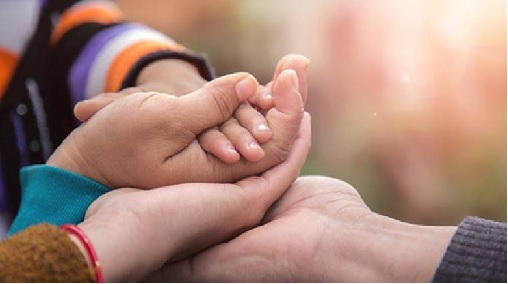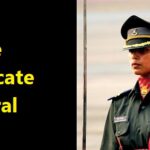Although this idea of rights of children was not well defined at the time of the Constitution’s creation, it was envisioned that children are the nation’s assets. They require protection and resources in order to develop into full entities fit to lead the country.
India is positioned 112 on the Child Development Index, despite substantial gains in education, nutrition, and child health over the last decade. Even after having various sorts of Acts for the protection of children, we still come across variety of child abuses or exploitation. Children are denied the most basic rights as well, such as right to health, proper nutrition, education etc. Even after having constitutional rights and various other laws, the children still continue to suffer and are being denied these basic rights mentioned above.
United Nations Convention on the Rights of the Children, 1992
The UNCRC came with a view to end the injustice done to the children and provides them with happy, healthy and safe surroundings.
Following are some rights provided under the Convention for the welfare of the children:
- Right to have an Identity: it’s essential for a child to have his/her name registered with the government to ensure the access to social services and legal support in case any kind of problem arises.
- Right to Education: The most important right of a child is to get basic education. This is important for the growth of various skills and also provides for a healthy environment to develop a child’s psychological thinking.
- Protection from Armed Conflicts: its Government’s duty to protect the children from the repercussions of the war, as it can have damaging results on a child’s mind.
- Protection from Violence: A child must not be abused or be a subject to any kind of violence whatsoever. All kinds of sexual abuses are unacceptable. This convention recognizes child trafficking, child pornography and child prostitution.
- The Right to Health: The right to health covers healthcare services, nutrition, security from harmful habits (including drugs), and safe working conditions. It also covers access to specialized care and assistance for children with disabilities, as well as quality health care such as drinking water and a safe environment.
Problem of Child Labor
When understanding a child’s right, the most heinous crime which takes place in relation to this is child labour.
The plight of working children and children forced or compelled to work has always been a source of worry in India, but the Pandemic has certainly driven many more children into child labour, including its most heinous forms. Certain clauses in the Indian Constitution are dedicated to the protection, growth, and safety of children. Article 24 makes it illegal to engage minors in any industry, mine, or other dangerous activity. The state shall direct its policy in such a way that a child’s tender age is not abused, that children are given quality education to grow in a positive way, and that child development is shielded with respect to any sort of abuse and moral neglect, as enshrined in Directive Principles of State Policy under Article 39 (e) and (f).
The Child Labour (Prohibition and Regulation) Act was passed by the parliament in 1986, but it was never enough to entirely eradicate child labour in India, since, it had numerous faults, simply because it didn’t directly aim the right of a child to receive education or any rehabilitative mechanisms for children.
Despite statutory laws and regulations against child labour, India’s child labour situation is worse. Children’s accessibility to school, basic nutrition, and other vital necessities for their growth and welfare have all experienced significant setbacks, with many more children falling into the trap of forced labour and current child labourers’ conditions deteriorating further.
List of Relevant Laws and Acts
Following is a complete list of Indian Acts and other legislation pertaining to the protection and welfare of children:
Protection of Children from Sexual Offences Act, 2012
- Right of Children to Free and Compulsory Education Act, 2009
- Bonded Labour System (Abolition) Act, 1976
- Convention on the Rights of Children CRC
- Children (Pledging of Labor) Act, 1933
- Commissions for Protection of Child Rights Rule, 2006
- Commissions for Protection of Child Rights (Amendment) Act, 2006
- Child Labor (Prohibition and Regulation) Rules, 1988
- Child Labor (Prohibition and Regulation) Act, 1986
- Commissions for Protection of Child Rights Act, 2006
- Juvenile Justice (Care and Protection of Children) Act, 2015 Guardians and Wards Act, 1890
- Hindu Minority Guardians Act, 1956
- Immoral Traffic (Prevention) Act, 1956
- Prohibition of Child Marriage Act, 2006
- Infant Milk Substitutes Feeding Bottles and Infant (regulation of Production, Supply and Distribution) Amendment Act, 2003
- Young Persons (Harmful Publication) Act, 1956
It’s important to note that four of these statutes dates back to the time before independence, long before the international community began to recognize children’s rights.
Landmark Precedents
- Unni Krishnan v. State of Andhra Pradesh
The inclusion of right to education within the ambit of right to life was an important result of this judgment given by the Supreme Court. It was observed by the court, “Education is a preparation for a living and for life,” and further stated, “We hold that under the Constitution, every person has a right to education.” It’s the duty of the state to establish schools and various learning institutions, so that a child can use his right to education.
The Apex Court in M.C Mehta v. State of Tamil Nadu stated:
“Our Constitution makers, wise and sagacious as they were, had known that India of their vision would not be a reality if the children of the country are not nurtured and educated. For this, their exploitation by different profit makers for their personal gain had to be first indicted. It is this need, which has found manifestation in Article 24, which is one of the two provisions in part IV of our Constitution on the fundamental right against exploitation. The framers were aware that this prohibition alone would not permit the child to contribute its mite to the nation building work unless it receives at least basic education. Article 45 was therefore inserted in our paramount parchment casting a duty on the state to endeavor to provide free and compulsory education to children.”
In Court on its own Motion v. Govt. of NCT of Delhi (2009), the High Court observed:
“We have got to work to save our children and do it with full respect for the fact that if we do not, no one else is going to do it.”
As we have discussed about the child rights, it can be safely concluded that no nation can prosper if its children are suffering, thus India works to protect children’s rights through different international, national, and state institutions. For India, it’s really shameful that its children continue to suffer so much, even when there are so many laws to protect them and save them from child labour. A child’s right to a secure upbringing is a human right that is often abused in our “social welfare system.”











